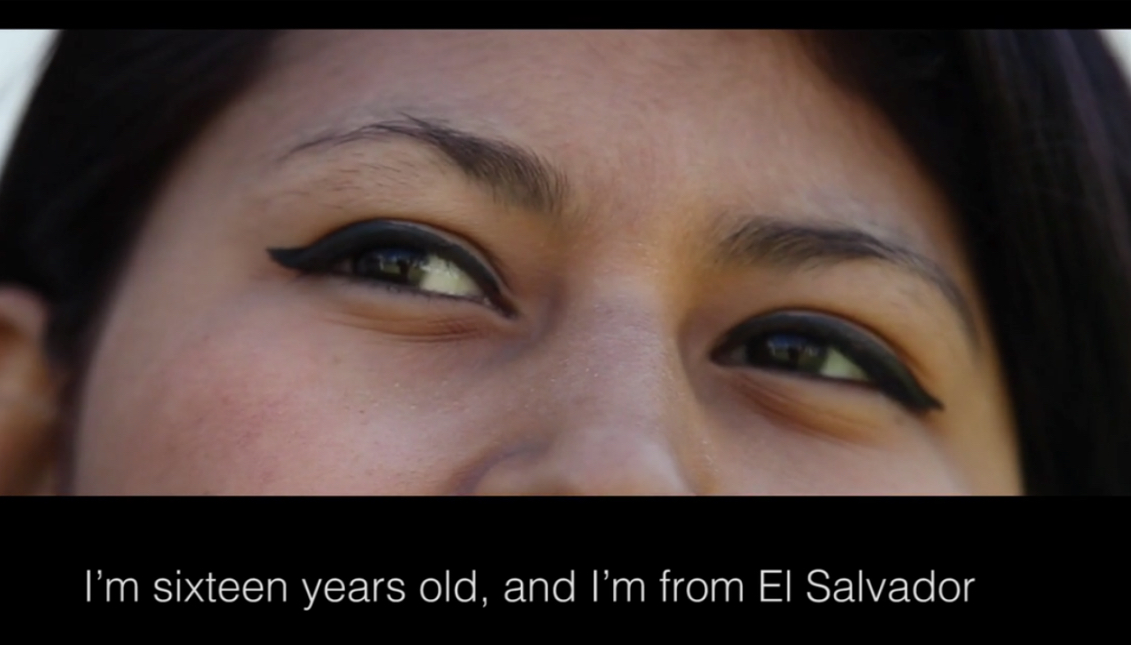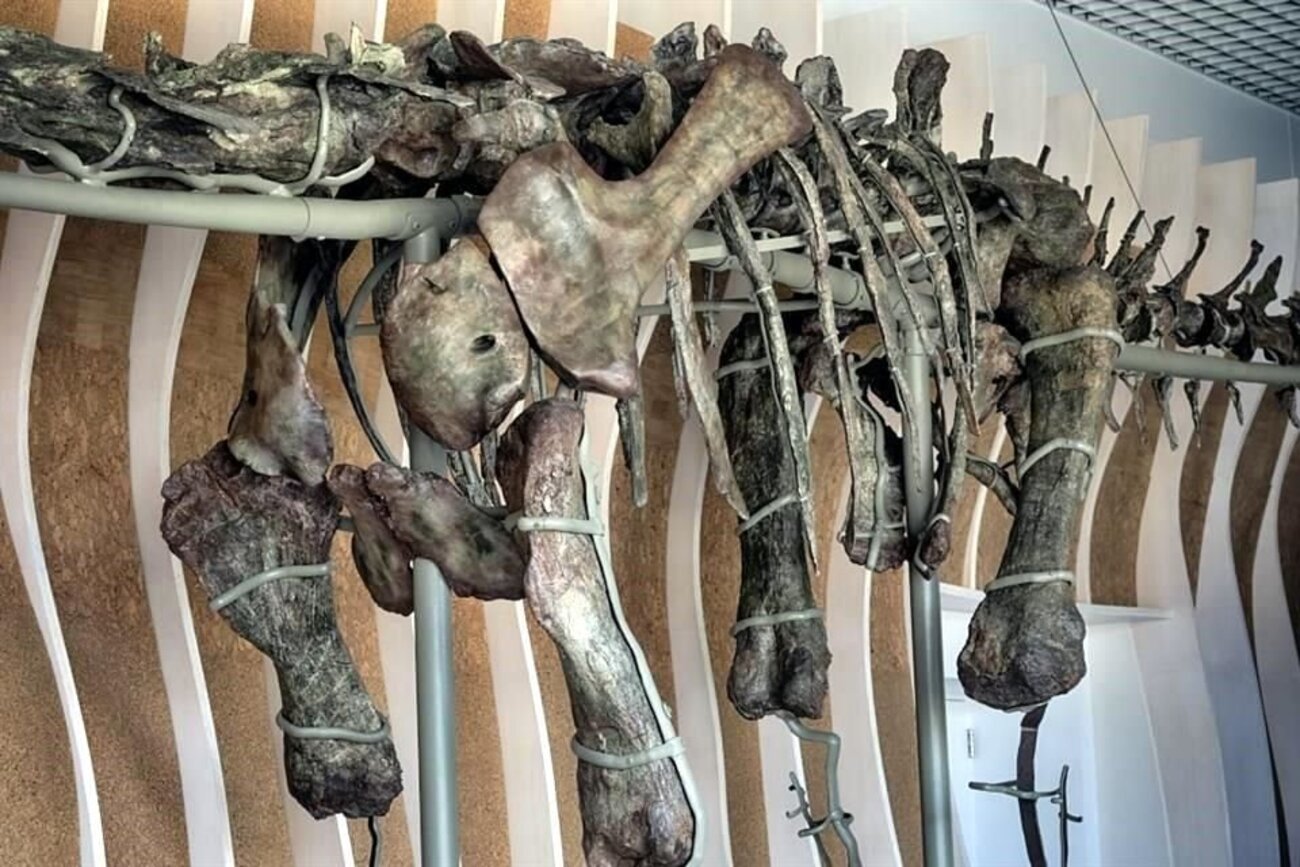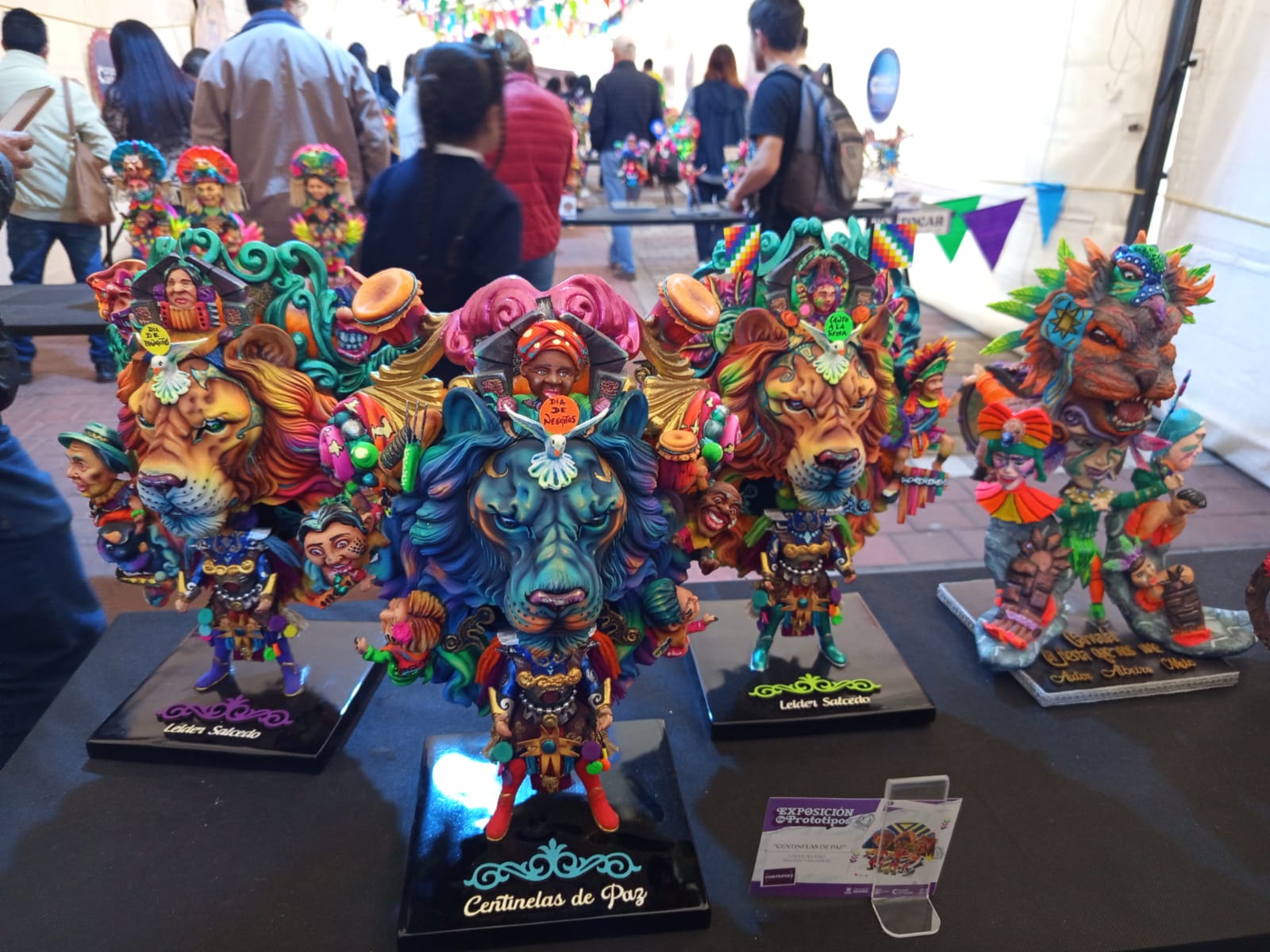
'Después de la frontera/After the border' opens at Taller Puertorriqueño
They cross the border every day in search of something better — better work prospects, better educational opportunities and even better families. They ride atop moving trains. They cram in between boxes in the back of trucks. They swim across roaring rivers and sometimes watch their peers drown. They are the unaccompanied minors who trek through Central America into Mexico and across the United States border.
When they arrive, life does not necessarily improve. While some of these unaccompanied minors are reunited with relatives and eventually gain citizenship, many more are thrown into chaotic detention centers and later fed through a dizzying bureaucratic funnel known as the foster care system. What happens to these new, and often unwelcomed, arrivals is the focus of an art exhibit now on display at Taller Puertorriqueño in North Philadelphia.
Después de la Frontera/After the Border is the brainchild of Baltimore-based artist and curator Tanya Garcia. Together with seven other artists, including Philadelphia muralist Michelle Angela Ortiz, Garcia examines what happens to minors who enter the United States undocumented.
Three of these cases are featured in her work Sigo Caminando/I Keep Walking, a 15-minute video composite that interweaves various tales into one dramatic narrative. There is the teenage boy who left his grandparents behind in Honduras after gangs murdered his parents and threatened more violence if he did not join their crew. There is the 18-year-old girl, also from Honduras, whose destitute family forced her to work starting at the age of 13. And then there is the 16-year-old from El Salvador whose mother encouraged her to skip town when the family could no longer afford to pay extortionist thugs seeking “rent.”
“I simply want to help and give voice to these stories I don’t believe get the proper attention,” Garcia says. “I’m really interested in narratives as a way to counteract negative stereotypes about immigrants, who are really political refugees.”

More than 50,000 unaccompanied minors were apprehended at the U.S.-Mexico border in 2014, a 90 percent uptick from the previous year, according to the nonpartisan Migration Policy Institute. The crisis began in 2012 when President Barack Obama temporarily deferred the deportation of nearly 600,000 minors. Republicans decried the executive order, blaming Obama for encouraging Central American youth to flood the border. Even Democrats at the time accused the president of being “one step behind” on the issue and exacerbating the crisis.
But Garcia sees a different problem at play: a history of political instability and American policies that have done more harm than good. An outline of said policies —including the 2012 Operation Anvil Honduras, which militarized anti-narcotrafficking efforts in Honduras and resulted in the deaths of many civilians— greet visitors when you first walk into the exhibit. The timeline highlights dirty wars, natural disasters and immigration stings that have impacted Northern Triangle —Guatemala, El Salvador and Honduras— residents.
“This area is considered the most dangerous region of the world because of its high crime and murder rates, surpassing war stricken countries,” the timeline reads.
Its placement in the exhibit signals a kind of challenge to the viewer: Can you blame the thousands of people fleeing these conditions?
Philadelphia muralist Michelle Angela Ortiz asks herself, and others, this very question in her own work. The idea of “forced migration” is central to her piece Enredado/Entangled, which is featured as the exhibit’s cover image. It shows the silhouette of a young man wearing a cap alight in red, thorns and barbed wire slicing through his image. Ortiz identifies him simply as Gerson.
“That image of the young man talks about not just the act of crossing, but how those scars that are left after they arrive … never really wash away,” Ortiz says. “I wanted to honor that sacrifice.”
Ortiz met Gerson while working on her Familias Separadas public art project, completed in collaboration with JUNTOS. The 17-year-old Gerson was new to Philadelphia at the time, having recently abandoned his life in Honduras and embarked on the arduous crossing by himself. Along the way he met others like him —teenagers desperate to flee violence, oppression and destitute economies. They enjoyed a kind of camaraderie, encouraging each other and motivating one another to keep going even when the task felt impossible.
“When you think about teenagers, and especially when you think about teenage boys, the last thing you think about is them supporting each other,” Ortiz says. “I thought that was really telling and beautiful.
Gerson has since reunited with extended family and settled into a new life in South Philadelphia, Ortiz says. But memories of that journey linger for Gerson and the millions of other immigrants now residing in the Unites States.

Garcia had a harder time finding subjects who trusted her with their stories. She first conceived of Después de la Frontera in 2014 while working as a fellow with Creative Alliance in Baltimore, an organization that empowers young people through arts education. Inspired by their interest in telling the untold narratives of immigrant youth, Garcia used her volunteer experience at Casa Maryland as a launching pad for her work.
At first, many people she spoke with feared deportation and refused to share their experiences publicly. After several months of gentle coaxing, Garcia found three teenagers and one single mother willing to talk on camera. She agreed to obscure their faces out of deference for their precarious legal situations but also to illicit a response from the audience. All we see is the emotion flicker across each subject’s eyes or mouths —a slight twitch here, a subtle tremble there. Sometimes these responses are barely noticeable, but the effect remains palatable.
“There is a kind of movement going on throughout the piece — the idea of water, land and these different forms of earth they have to travel through just to get here,” Garcia says.
The subtle movements in Garcia’s subjects highlight the burden each teenager continues to face in his or her new American life. The elder Honduran girl, who rode a atop a train for part of her journey north, talks about an abusive foster family that forced her to work from 7 a.m. to 7 p.m. every day. She eventually found a new home, but echoes of her dark past, both in the United States and in Honduras, haunt her to this day.
In this way, Después de la Frontera is purposefully confrontational. There is never any question where the artists stand on the issue of unaccompanied youth and immigrants, in general, crossing into the United States. All seven artists are Latinos, and several are recent immigrants themselves. Some even crossed undocumented just like their subjects. While many of the pieces exude sympathy, many more demand action.
Photographer Edgar Reyes confronts this idea of the broken American Dream in his piece Extranjeros en su tierra nativa/Strangers in Their Native Land. The triptych features images, both religious and familial, from Reyes’ life superimposed on photographs of his relatives. In one panel, a photograph of Reyes’ grandfather, who has crossed the border several times, is overlaid on an image of his young cousin in Mexico. In a different panel, we see Reyes’ adult cousin holding a baby with the spectral image of her grandmother peeking out through the gossamer.
The visual threads are woven together by clever photographic techniques, but the understated symbolism vibrates someplace else entirely. Reyes is interested in the ongoing struggle of immigrants living in the U.S. As a border crosser himself — he came over at the age of 5 via Tijuana — the artist now feels a kind of survivors’ guilt because he has found a slice of the so-called American Dream where others couldn’t. More often than not, his success feels like a burden.
“For years, I couldn’t see my grandparents in Mexico and now a piece of paper tells me I can do whatever I want,” he says. “I feel really lucky, but I also feel it is really unfair that other people aren’t as fortunate.”
Now 25 years old, Reyes is a citizen and teaches at a prestigious college preparatory school in the D.C. area. He continues to struggle with an all too familiar sense of never quite belonging. He is too Mexican to be American and too American to be Mexican. His Spanish has changed. His clothed have changed. In some ways, Reyes’ ghostly triptych, with its blurred lines and fragmented images, speaks to the arbitrary nature of geopolitical borders.
“[Mexicans] have a rich history here in the U.S.,” Reyes says. “But there is a hypothetical line, the border, that informs how people … treat us. They just don’t know.”
Like many of the other artists featured in Después de la Frontera, Reyes sees himself in the unaccompanied youth depicted throughout the exhibit. He made it, but how many others didn’t?
His older cousin, for instance, who is shown cradling her newborn child, lives in the United States but married a man who is not here documented. They face a daily struggle just to keep the family together, Reyes explains.
“It takes a toll on people,” he says. “You think you crossed the line and have a perfect ending, but you don’t. A lot of us live in the shadows.”
* Después de la Frontera is on exhibit at Taller Puertorriqueño now through June 25 *










DEJE UN COMENTARIO:
¡Únete a la discusión! Deja un comentario.